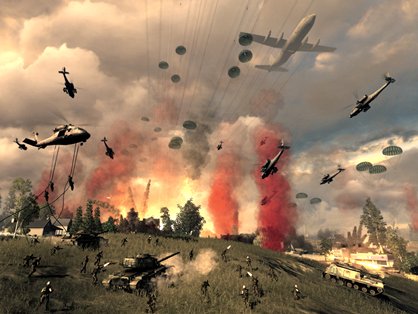See through the specs
Minimum system requirements often mean minimum fun. Is the industry honest about what hardware games need?
There’s nothing more frustrating than installing a much-anticipated game only to find out that there’s absolutely no way it will play on your PC without a hardware upgrade. Nothing, that is, except finding that it does run, but only with framerates in single figures and all graphics settings set to low. Do you soldier on, knowing that you are in no way experiencing the developer’s vision? Or do you regretfully put the disc to one side until you can afford a better PC? One thing’s for sure: the minimum system specs on the boxes of our games are a misleading, meaningless mess.

Above: Even with a high-end graphics card, Crysis will still murderize your framerates
One industry insider, a lead engineer for a major games company who wishes to remain anonymous, summed it up for us. “The communication with the consumer regarding game minimum requirements is terribly broken,” he said. “Figuring out if your PC can play a game, and then installing it, is time consuming and complex. The average PC user has no comprehension of what his or her PC ‘is’, and therefore the minimum specs listed are utterly meaningless. This can’t be overstated. The bulk of our potential customers have no clue, and the industry insists on pretending that they do.”
The success of the PC - both as a games machine and a utilitarian computer - is due to its hardware standards being relatively fixed. You can design a graphics card, and so long as it conforms to certain parameters it will work in your PC. That means innovation is relatively easy, the market for new products is huge and competition, which drives down prices, is rife. It also means that as a games platform, the PC is unrivalled. You can take an old machine, perform a simple upgrade and get it playing the latest and greatest without expending too much time and money.
All this is good. The bad part is that it means the PC is a nebulous concept: the term can be applied to a near-infinite combination of graphics cards, processors and memory. The very phrase ‘This is a PC game’ is meaningless. There are thousands of brand-new PCs out there, still in their boxes, that can’t play Battlefield 2 - launched nearly two years ago - let aloneCrysis.
We’re not just talking about the PCs you see advertised in tabloid papers for under a few hundred bucks, either. There are machines in major chains sold explicitly as ‘Gaming PCs’, which we wouldn’t play Solitaire on thanks to the presence of a cut-price graphics card. Upgrading isn’t so straightforward either: card manufacturers regularly put extra memory on a low-end card knowing that people will equate large numbers - such as 1Gb - with high performance when the truth is it makes no difference whatsoever. One major 3D card manufacturer admitted to us that it’s just a cheap marketing trick with no real value. Cards that share all but a letter of their name with top-of-the-range kit may only have a fraction of the power. ‘DirectX 10 Compatible’ is plastered all over the box as a performance feature, when actually only a few of the cards branded as such could even dream of DX10 gaming.

Above: Why are they all moving so slow...?
Sign up to the GamesRadar+ Newsletter
Weekly digests, tales from the communities you love, and more
How do we work out what games will work on our PCs? We break that PC down into its component parts and cross reference them with the list of minimum requirements on the back of the box. This is nothing new. Since games like Wizard’s Castle and Zork were released for the hardware-agnostic DOS platform in the early ’80s, they’ve been carrying these little reference charts.
In the dim and distant past, when the speed of your processor and the presence of a 3D card were a fair way of representing the capability of a PC, that made sense. In the new age of ‘megahertz don’t matter’, a generic system for defining your hardware’s gaming potential is tougher to draw up. A 3GHz Pentium 4 CPU, for example, is no match for a 2GHz Core 2 if the game is optimised for more than one processor.
With each new version, processors get more efficient at doing their job. Factor in the rise of dual, triple and quad core processors, and there’s a whole new world of pain awaiting us. Confusingly, both AMD and Intel have dropped their Celeron and Duron product lines which helped to mark out budget processors that weren’t up to gaming. Instead they’re both relying on codes that take a bit of effort to decipher.


